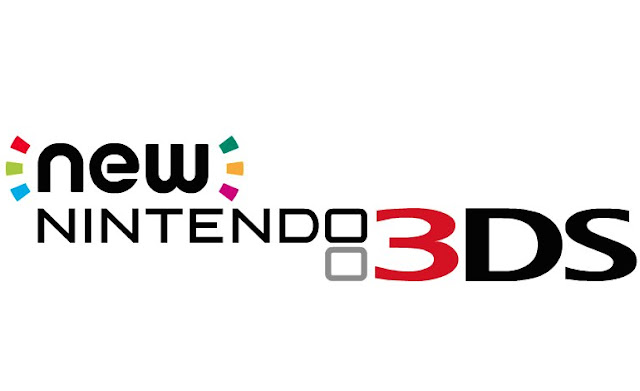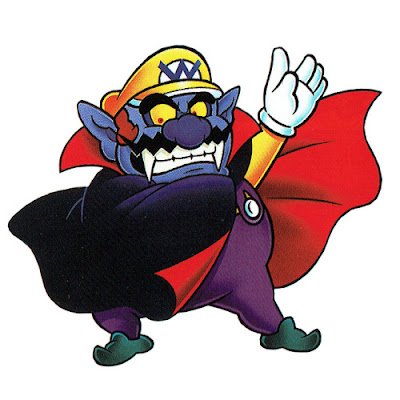Wario Land 2
Having recently played through the original Super Mario
Land, Super Mario Land 2 and Warioland: Super Mario Land 3, I turned my attention
to the next game in the series which is Wario Land 2.
From the very title it hints at a different experience,
dropping the Super Mario Land moniker that it had carried prior. That was the
first clue that things had taken a change of direction from the previous games.
My cartridge for this was the original GameBoy cartridge,
this entry had the blessing of having feet in either camp, a piece of software
that could be played on two generations of hardware.
Two versions of this game were officially produced, one
boxed and marked up as an original GameBoy game, with a Super game Boy pack enabled
palette swap and a year later a GameBoy Color (Colour) variant that carried
more colours for the applicable enabled hardware.
I have the original GameBoy version in cartridge form.
The manual in this is glorious, great drawings, cool little
bits of lore and is written in the third person by Wario himself.
Originally, I had started playing on this cartridge via the
GameBoy player on my GameCube on a PVM.
However, as with old cartridge battery back up games, I was
never completely confidant on the health of the battery in that cart, being 20
years old and not that I’ve ever been a victim of a dying battery yet, it would
certainly suck if I lost all progress on any game.
I have to admit that I was also very much teased by seeing
this game in it’s Color form and without too much deliberation I also picked it
up on the eShop on my 3DS and eventually played through it on that delightful
piece of hardware.
There’re some fundamental differences between this and the
last game in the series. Firstly, there’s no lives, in fact, there’s no damage
as such either, you simply can’t die. In place of health or damage each time
you get struck by a nasty – you loose coins that you have collected along the
way. Wario’s treasure that he’s collecting after its theft.
The coins that you collect or retrieve on your adventures
are used in a number of mini games that are placed throughout the game that if
successful, befit their own rewards.
The mini games in this entry are better than the last game
and are perhaps slight hints to the early beginnings of Wario Ware.
The level structure is also different from the run to the
right platformer norm and is built up via a number of areas linked by doors.
The doors often take you back, up, down and even back around in loops, dead-ends
or secrets.
There is also the very odd exclusion of a world map, or so
it seems initially. You very simply progress from level to level, in a very
traditional 4 stage then boss fight pattern. This feels very out of place when
you compare it to the previous game and even the game before that (Six Golden
Coins) where you could re-play levels, explore further and sniff out secrets or
items you have missed.
Each level has a unique secret treasure hidden within it.
These are often gained by finding more hidden doors that lead to mini games,
that if successful reward you with a piece of treasure. Then, at the end of
each level there is a mini game that if successful rewards you with a tile
piece. This then falls into what is in effect a puzzle board that paints a
picture as you collect the tiles - **On a side note, this is where I had my
suspicions that something grander was afoot, as the puzzle board has 50 pieces.
This is where the games currency comes into play. The coins
that you collect as you play through the game collate and allow you to pay to make
changes to the games you play in order to make them easier.
This I found was paced perfectly and even as I was at the
end of the game the mini games took just as much attention and concentration as
they did the first time around – as well as each precious coin still being an
asset in terms of achieving success.
Another difference in this entry to the series are the
power-ups, which are effectively removed in the traditional sense. Due to the
there being no damage, you also don’t have the opportunity to power up. To get
around this mechanic certain enemies will change your form temporarily, either
until a timeout or if you interact with something in the environment. For
instance, certain enemies will turn you into a zombie, which renders the
ability to jump but allows you to fall through certain floors, then to return
to normal again you must walk into sunlight.
It’s very clever and offers up some great little puzzle
moments and clever design.
The sound is pretty unremarkable really and offers nothing
in terms of atmosphere other than a few mildly themed tunes to match certain environments
bit of a missed opportunity I feel considering the level of attention that went
into the rest of the game.
The bosses are clever and nicely designed to bring a new
variety each time you encounter a new one. The city/town boss is a back street game
of basketball !! There’re also a few alterations of the traditional final boss
routine, there’s a few scenarios that involve hunting down several beefed up
regular baddies that are hidden around the stage. It’s good, and feels slightly
advanced for a Gameboy cartridge.
The challenge, which is what I suppose you can best use to
describe this game, isn’t from the combat or platforming, it’s the mild
maze-like levels and the discovery of the games hidden treasures.
Final percentages after first beating the game.
Then, once you beat the game, it starts over but this time
shows you your journey through the game and the paths you took – which also
shows you the paths you missed !
It was such an eye opener in terms of what the game actually
had to offer.
Having the patience and the desire to go back through and
find everything is understandably a personal thing.
It’s awkward as the phrase that springs to mind is ‘The game
only starts once you’ve beaten it’.
Going back and seeing where you’ve missed puzzles pieces or
treasure does tug at the internal gamer heart strings and you soon start
filling in the gaps.
Hidden levels which offer branching paths in the progression
are fun – however a large frustration with them is that they hide some of the best
areas in the game.
There’s a whole sunken city ruin area, which you get to by
sinking the SS Teacup that you are travelling on and a whole area based in. The
mechanics in the secret area revolve around water and moving it about. Something
that would very well be missed by a casual player or by someone not bothering
to finish the game or sniff out the secrets.
Secret areas are based upon the same basic structure, 4
levels and a boss level.
In my whole-time playing through it, not once did I find an
alternate, or hidden exit, let alone be aware that it was even a thing.
The requirement to unlock these areas are often different to
a traditional secret exit and will involve some sort of other environmental
task to show the way.
Each branching path then offers its own unique ending and
cut scene – all very cool.
The game presents itself originally as a linear platformer,
without too much of a hint of what the game has to offer in terms of fuller experience,
its such a shame that it’s locked away and even kept secret until 10+ hours
into the game.
Once you’ve found all of Wario’s treasure you unlock a final
mini game, which is a sort of memory rhythm game with a giant duck, its funny
and silly, again you can see the foundations of Wario Ware here and is a pleasant
surprise. To play it, you must use the Treasury that you have collected
throughout your whole game and it all links together very well and gives off a
good sense of package.
It also did the old-fashioned thing of introducing new sprites
and different art work, which after over 25 hours with this was interesting and
fun. It took me back to the old days of completing games just to see the sprite
work design for the ending. The Feels.
Once you collect the all of the puzzle pieces it unlocks a
treasure map, that reviles a final secret stage that is a proper pest. It’s a
rather challenging platforming stage, that is timed. It took me just a snip over
20 minutes. I don’t feel that the controls are solid enough for such a task and
I have to admit, for this level, I did use the save state feature of the 3DS –
the only time I did throughout the entire game.
I’d have never beaten this level on an original GameBoy cartridge
as I would have smashed it to pieces.
Overall, I very much enjoyed this game, even after my initial
disappointment upon the realisation that it was a very different game to
Warioland.
I think it certainly stands up on its own, as its own game,
not just another entry as part of a series.
It’s good at what it does, is robust and offers its own challenges
and satisfaction. It was also a brave move to make the change, I think.
Being honest, I think I prefer the more traditional platforming
of Warioland although I do feel encouraged by what I played and am very much
happy with my time invested in it.
I’ve put many games down half way, or even right at the very
end. This did have a rocky start and was put on hiatus for a few months but
once I understood it better – never once did I feel that I wouldn’t see it out
to the very end.
Not great but very interesting and pulled off on a console I
don’t think could pull it off as well as it did.















Comments
Post a Comment